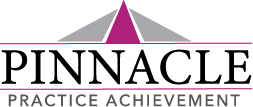Friday Philosophy-“Cross Your Arms The Other Way”
Many individuals (and in my experience, most physicians) fear change in the same way that those of us who grew up in the 70s, 80s and even the early 90s feared horror movies. You know what I’m talking about. When they were filled with terrible (although we didn’t know they were terrible) special effects, unpredictable jump scares and music that you just couldn’t shake. . . “One, two, Freddy’s coming for you.”
When a physician contacts me to help improve their practice (whether from an efficiency, financial or combination standpoint) I first collect general information; when it was established, number of doctors and staff, types of patients and volume, ancillary services provided, scheduling and intake systems, billing and collections processes, marketing efforts, and what they feel are the biggest issues. I then ask for some “simple” (although in some EHR and PM systems there is nothing simple) reports such as new patient percentages, CPT analysis, charges vs. collections, days to bill/days to pay, payer mix, rejection rates, and aging. I then compare what the doctor has expressed to the black and white that I have analyzed. The outcome is usually a combination with one glaring commonality, the need to change and subsequently the willingness to do so.
This brings us back to the title of this email “Cross your Arms the OTHER Way.” No really, do it. First cross your arms the way that is comfortable to you. The way you do it when you are cold or demonstrating some sort of passive aggressive body language. And then, try it the “other” way. Weird, right?!
Right, however, I guarantee if you tried this “other” way for three weeks in a row it would become your new “normal” and the old way would seem foreign. I urge you to do this with your practice. Determine a simple task that needs to be improved and map out a new/better/different way of performing it. Example: If there is a bottleneck at “check-out” because check-out is check-in and there is only one person sitting in both seats, ask your medical assistant to schedule follow-up appointments in the treatment room. This way patients would only need to stop at “check-out” if they have to pay for a cash product or service. Or give your medical assistant the ability to receive payments via iPad and chip reader. Two birds, one stone. And who better than to schedule the next appointment and know what the patient needs (in order to collect payment) than the staff member who assisted in clinical care?
It may be an adjustment (like crossing your arms the other way) but in 21 days, habits can be broken, and new ones made.
